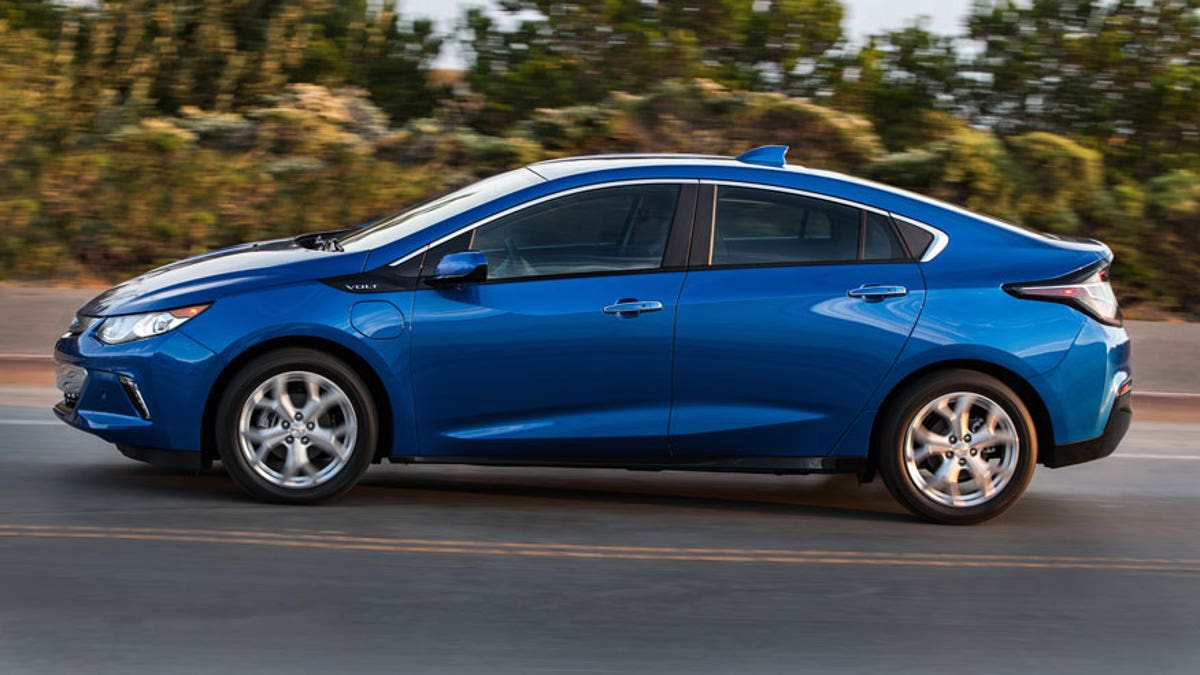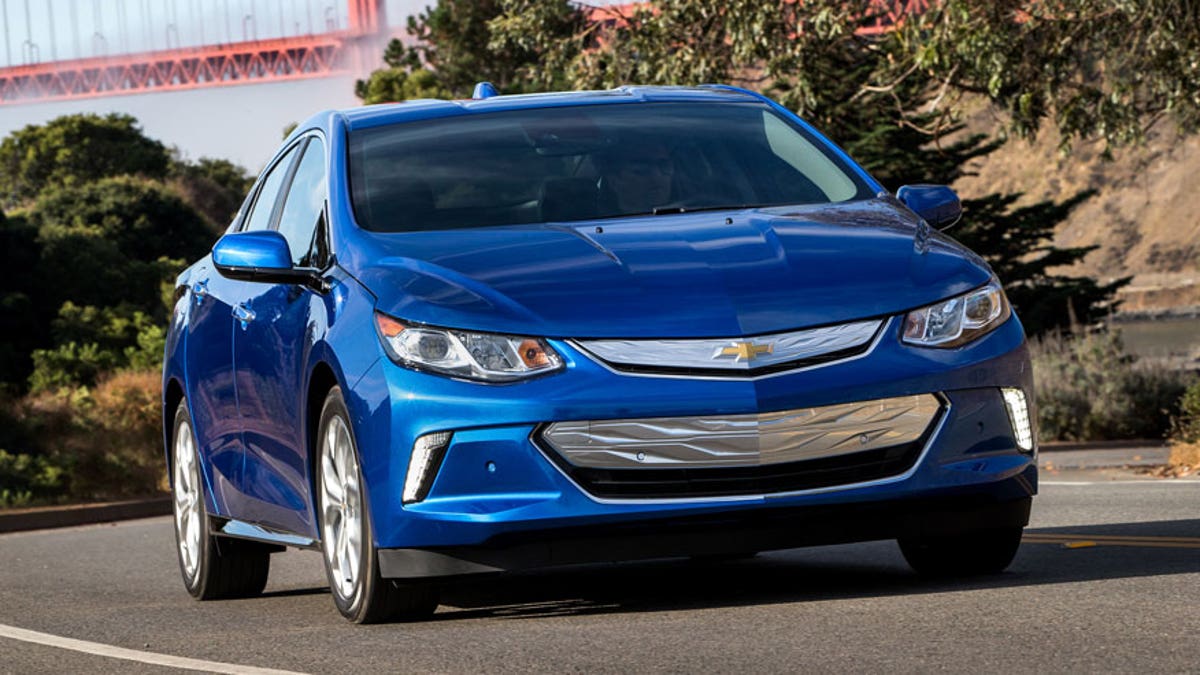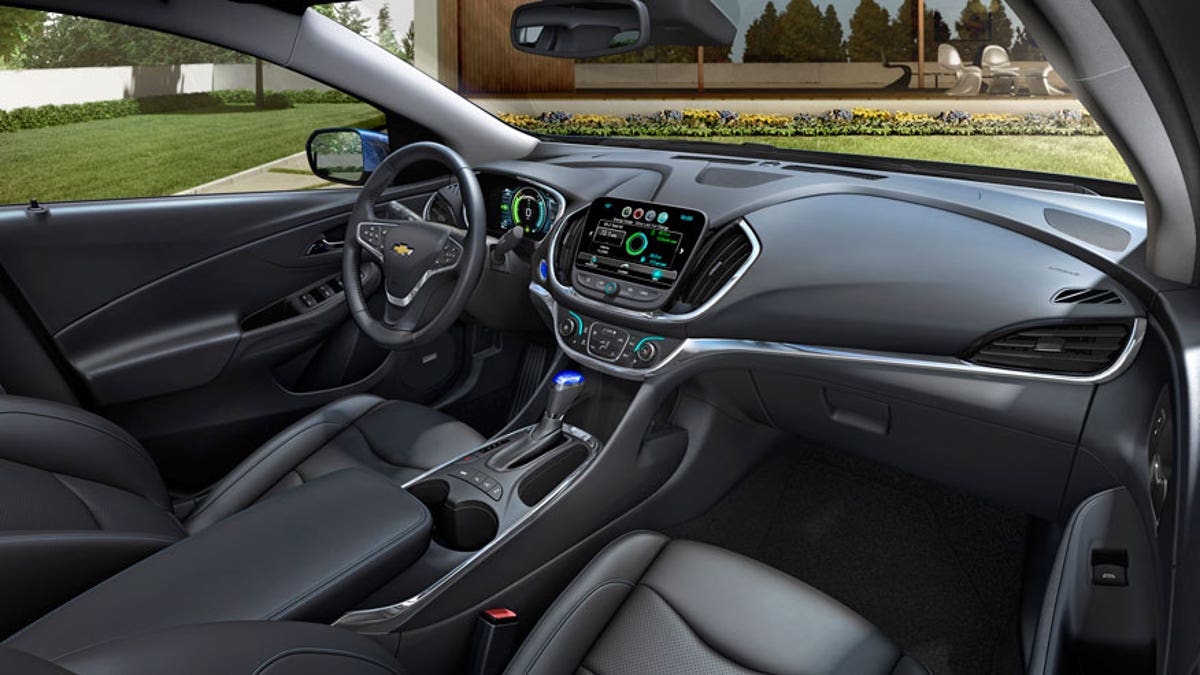
(Chevrolet)
You may not have heard it, but there’s a new Chevy Volt on the road.
That’s not a reference to the plug-in hybrid’s silent electric drive. It’s to the lack of fanfare surrounding its arrival.
Chevy is touting a new "next big thing" these days: its Tesla-fighting, pure electric Bolt, which, in an effort to give it a fresh start in the green game, has overshadowed the second generation Volt in the company’s marketing.
When the Volt concept debuted nine years ago, it was touted as the future of GM: a battery-powered wonder machine that could also run on gasoline, but would rarely need to. The Toyota Prius didn’t stand a chance.
As gasoline crested $4.00 per gallon the following year, the production version was proudly unveiled with promises of 230 mpg and 60,000 annual sales. What could go wrong?
Well, the economy crumbled, taking GM and those high gas prices with it. By the time deliveries began at the end of 2010, the pricey project had become the poster child for critics of the automaker’s government-funded bailout. It turns out the Volt is the one that never stood a chance.
Nevertheless, its launch was a watershed moment in the history of the automobile. Most automakers have followed suit with plug-in hybrids of their own, and they just keep adding more. Granted, this has been driven by regulatory requirements more than market demand, but the Volt led the way.
For what they've been worth to GM’s bottom line, the first generation Volt’s 80,000 or so total U.S. sales do make it the most successful plug-in hybrid by a zero emissions mile, and its owners absolutely love it.
They should be ecstatic about the new one.
The all-new Volt is still a compact four-door hatchback, and it works basically the same as the original, but it is completely reengineered and better in all regards.
To recap: Volt has a powertrain comprised of two electric motors and a four-cylinder gasoline engine. They package is more compact and more efficient this time around, while the battery pack is lighter and has a higher capacity. In the old Volt you could drive 38 miles on battery power, then switch to gas and get 37 miles per gallon until you had time to plug in and charge up. Those numbers are now 53 miles and 42 mpg, and, based on my drive, they seem right on the money. A full charge takes either 4.5 hours on a 240v fast charger, or 13 hours on a 120v home outlet.
According to U.S. DOT statistics, over 85 percent of commuters would never use a drop of fuel driving the new Volt back and forth to work. Chevy predicts that more than 90 percent of the trips Volt owners take will be battery-powered, and they’ll burn just one gallon of gas for every 1,000 miles they travel.
They’ll do it with a lot more style, too. The original Volt was a bulbous, slab-sided thing, with techy white or black plastic interior trim and touchpad controls that was arguably cool at the time, but so was Blackberry.

(Chevrolet)
Save for a silver double-decker grille that looks like a tribute to Jaws from the James Bond films, the 2016’s style is more conventional. It’s fitter, trimmer and more normcore on the outside, with an interior that features an artfully sculpted dashboard trimmed in plenty of old-fashioned chrome, buttons and knobs.
There’s still a touchscreen for the infotainment system that’s loaded with Apple CarPlay, which can mirror some of your iPhone’s functions, including Apple Maps. The similar Android Auto will be added at a later date for the other four out of five of you smartphone users, and even some Blackberry models are compatible. The instrument cluster also gets the flat-screen treatment to keep a little futurism in the mix, enhanced at night by Tron-style blue mood lighting.

(Chevrolet)
The list of optional autonomous driving aids is short, but the Volt can steer itself between the lines and into parking spaces, and also brake for any cars in front of it that you don’t happen to notice.
One of the top gripes about the old model was that it was cramped and only had four seats thanks to the T-shaped battery pack running down the middle of it. This one’s slightly roomier and technically has five, but there’s a console with cupholders in front of the padded hump, so unless their legs are the size and shape of 12oz cans, you should still leave the fifth wheels at home.
Environmental concerns aside, the beauty of electric drive is how refined it makes a car feel, regardless of what it costs. In this case, that’s $33,995. After subtracting the federal $7,500 tax credit the Volt qualifies for, you’re looking at $26,495, which is about the same as a loaded Chevy Cruze.

(Chevrolet)
In electric mode, the Volt moves so smoothly and silently that it puts many luxury cars to shame. The power delivery is direct, and there’s a paddle behind the steering wheel that you can use to slow the car down with the motors as they charge the battery to extend your range, not to mention the life of your brake pads.
Drain the battery or switch to Hold mode, which preserves its charge to use at your discretion (like when you need to sneak into the driveway late at night), and the 1.5-liter four-cylinder engine kicks in as needed. It primarily acts as a generator for the electric drive, but is coupled to it at certain speeds through a planetary gear set to help with the pushing.
In the old Volt, the engine could get very buzzy at times, knocking the refinement level down several notches, but the new one has been muffled to the point that it’s quieter than a lot of regular cars’, even at full boil. In fact, the entire Volt experience is closer to a Buick’s than a Chevy’s in its serenity.
But while the sequel is far better than the original, its fortunes may not be.
Gasoline is absurdly inexpensive right now. According to the EPA, the Volt costs $1.08 to drive 25 miles on it, compared to $1.01 on electricity. State to state, those numbers vary greatly, and not always in lockstep, but the EV advantage is practically nonexistent, and it doesn’t look like that’s going to change anytime soon.
Worse still, there’s a new Toyota Prius that gets 56 mpg and costs just 81 cents per mile. That’s less than any other car on the road, including all the electrics. Of course, while the Prius is far from a gas guzzler, it does always sip it. The Volt doesn’t have to.
For its loyal audience, that’s really all the fanfare that matters.
----------
2016 Chevrolet Volt
Base price: $33,395
As tested: $40,825
Type: 5-passenger, 4-door hatchback
Powertrain: 1.5-liter 4-cylinder and two-motor electric drive unit
Power: 149 hp, 294 lb-ft torque
Transmission: Single-speed automatic
Electric range: 53 miles per charge
MPG: 42 mpg combined